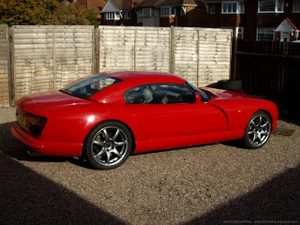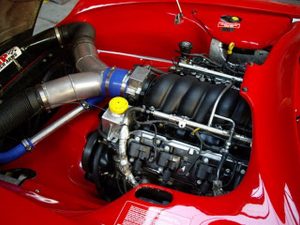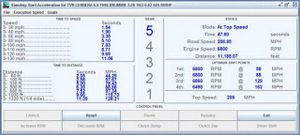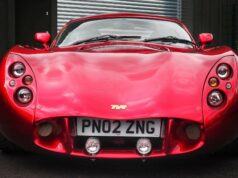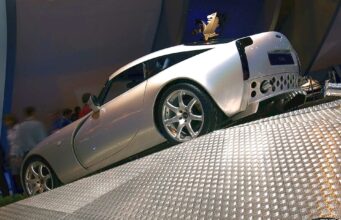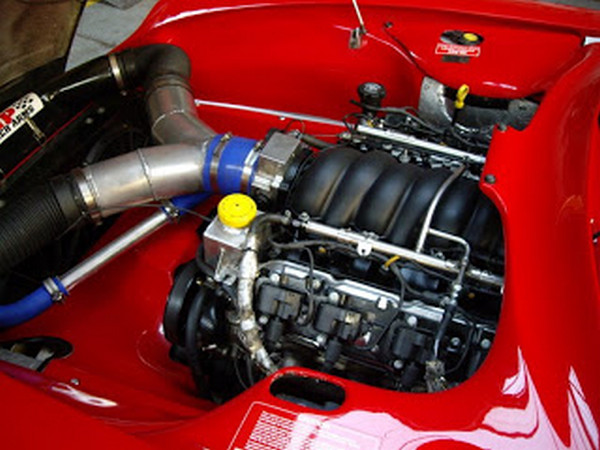
This stunning TVR Cerbera in Corsa Red has been seriously modified with a LS1 Corvette engine (hope the owner kept the wonderful AJP-8 engine!).
LS1 General Motors engine: a brief overview
The LS1 shares little other than similar displacement, external dimensions, and rod bearings, with its predecessor. It is an all-aluminum 5.7 L (5665 cc, 346 cu in) pushrod engine with a bore of 3.9 in (99.1 mm) and a stroke of 3.62 in (91.9 mm).[1] It was rated between 305–350 hp (227–261 kW) and 335–375 pound-feet (454–508 N·m) of torque in North America, depending on the application. In Australia, continuous modifications were made to the LS1 engine throughout its lifetime, reaching 382 bhp (284.9 kW) in the HSV’s YII series and a Callaway modified version, named C4B, was fitted to HSV GTS models producing 402 bhp (299.8 kW).
The version fitted to the 2004 Pontiac GTO was rated 350 bhp (261 kW) and 365 lb·ft (495 N·m). Beginning in 2001, the LS1 received the higher-flowing intake from the LS6 and a milder camshaft to keep power at the same level; this also allowed GM to remove the exhaust gas recirculation (EGR) system (Camaro/Firebird only; 97-00 Corvette LS1 never used an EGR system). The block is very similar to that of the higher-output LS6; beginning in 2002, some LS1 engines were actually built using the LS6 block instead.[citation needed] The LS1 was on the Ward’s 10 Best Engines list for 1998.
* 1997-2004 Chevrolet Corvette C5, excluding Z06
* 1998-2002 Chevrolet Camaro Z28, SS
* 1998-2002 Pontiac Firebird Formula, Trans Am
* 2004 Pontiac GTO
* 1999-2005 Holden Commodore Ute
* 1999-2005 Holden Commodore (VT, VX, VY, VZ)
* 1999-2005 Holden Statesman (WH, WK, WL)
* 1999-2005 Holden Caprice (WH, WK, WL)
* 1999-2004 Holden Special Vehicles (all V8 models)
* 2001-2005 Holden Monaro CV8
* 2006-2007 Elfin MS8 Streamliner
Incredible performances
Someone told the LS1 Cerbera’s owner after this conversion: “is it worth?”. Here is his personal answer to this work: 0-60 mph in 3″35, 0-100 mph in 7″83, nearly 209 mph. Amazing! It’s really a good job. In the image below you can see the complete results

